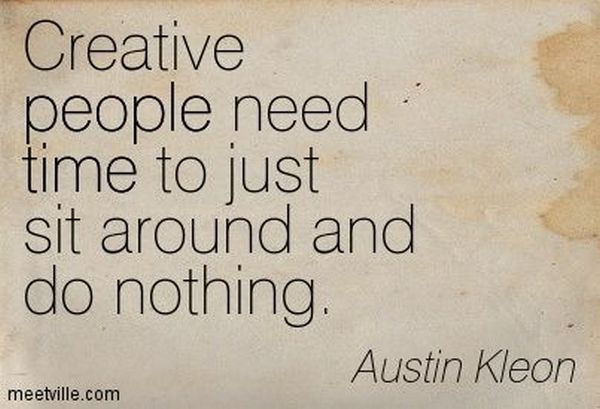Why resist change
Organizational Change – 8 Reasons Why People Resist Change
In This Article
(Click the links below to move easily to sections of this article)
The Truth About Resistance to Change
Why People Resist Change
Case Study: Do People Naturally Resist Change?
Video: Why People Resist Change
Survey: Resistance to Change
Member Content: Additional Change Management Resources
Scholarly Citations for this Article
Back to Top
The Truth About Resistance to Change
With the exponential growth of computer processing in this Information Age and its impact on an ever evolving global economy, change is now the normal state of business.
Despite the presence of change all around us, organizational change does not come easy, however. In fact, many organizations fail to make the changes that are necessary for their survival.
Senior sponsors of organizational change often blame implementation failures on employee and middle manager resistance to change. At times, this is true. More often, however, senior leaders and managers over-estimate how much change they can force on the organization. Some also do not understand how difficult it is to lead and implement change effectively.
Leading and implementing change requires people skills!
As I coach managers on their change management efforts, I explain that resistance to change is rarely irrational. Keep in mind that if your employees (or even your peers or boss) are resisting your change efforts, their resistance comes from a perspective that makes perfect sense to them.
This is because of the following truth about change:
People do not resist change that they believe is in their best interests. Click To Tweet
Back to Top
Why People Resist Change
In practice, there are 8 common reasons why people resist change:
(1) Loss of status or job security in the organizationIt is not our nature to make changes that we view as harmful to our current situation.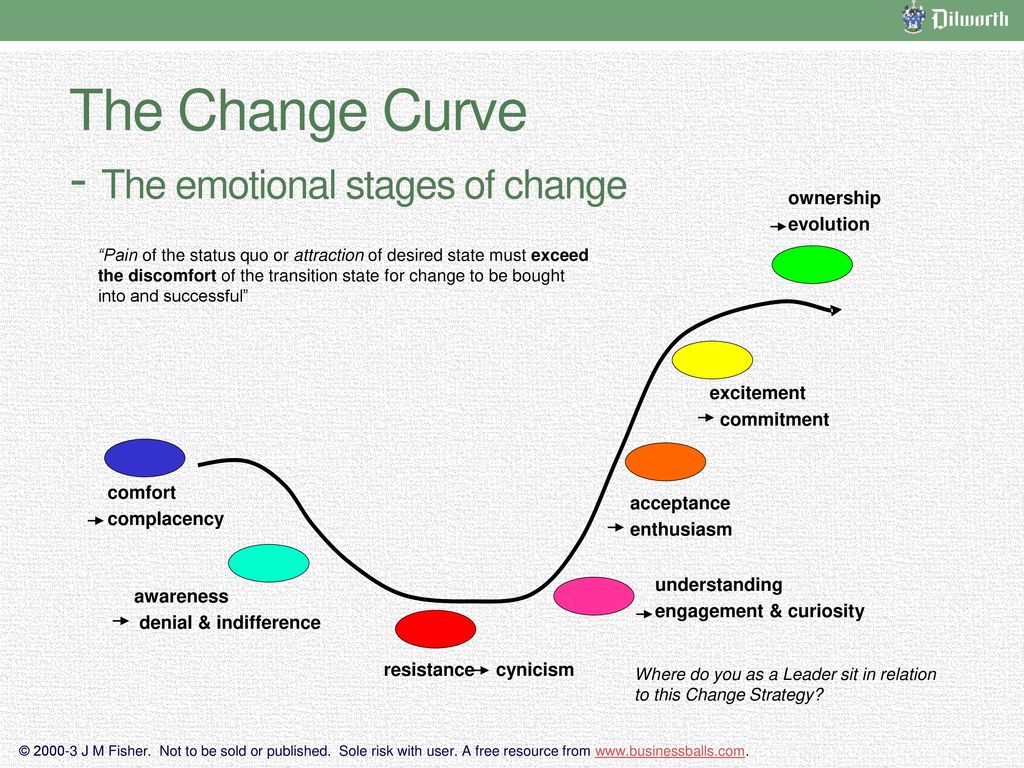 In an organizational setting, this means employees, peers, and managers will resist administrative and technological changes that result in their role being eliminated or reduced. From their perspective, your change is harmful to their place in the organization!
In an organizational setting, this means employees, peers, and managers will resist administrative and technological changes that result in their role being eliminated or reduced. From their perspective, your change is harmful to their place in the organization!
Forcing a change on others has its place. Over time, however, when this is the only approach that you use to make change, you’ll find that your change results suffer. If you overuse this approach, you will harm your effectiveness over the long term as others will find direct and indirect ways to resist you. Without a thoughtful change strategy to address resistance to change, you will trigger strong resistance and organizational turnover.
(2) Poorly aligned (non-reinforcing) reward systemsThere is a common business saying that managers get what they reward. Organizational stakeholders will resist change when they do not see any rewards.
When working with managers, I will ask them, Where is the reward to employees for implementing your change?
Without a reward, there is no motivation for your team to support your change over the long term. This often means that organizational reward systems must be altered in some way to support the change that you want to implement. The change does not have to always be major or costly. Intrinsic rewards are very powerful motivators in the workplace that are non-monetary.
This often means that organizational reward systems must be altered in some way to support the change that you want to implement. The change does not have to always be major or costly. Intrinsic rewards are very powerful motivators in the workplace that are non-monetary.
The less your team members know about the change and its impact on them, the more fearful they will become. Leading change also requires not springing surprises on the organization! Your organization needs to be prepared for the change.
In the absence of continuing two-way communication with you, grapevine rumors fill the void and sabotage the change effort. In fact, ongoing communication is one of your most critical tools for handling resistance to change. But, it’s not just telling! The neglected part of two-way communication — listening — is just as powerful.
Change that is poorly communicated will only stir up organizational resistance.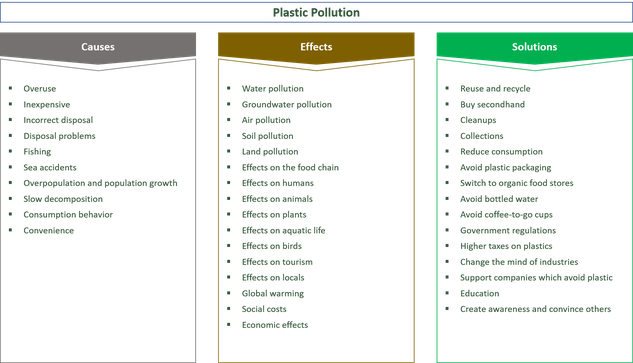 Click To Tweet
Click To Tweet
Whether we are introverted or extroverted, we are still social creatures. Organizational stakeholders will resist change to protect the interests of a group.
You might see this among some of your team members who feel compelled to resist your change to protect their co-workers. If you’re a senior executive or middle manager, your managers who report to you may will resist your change effort to protect their work groups.
As the psychologist Abraham Maslow discussed, the need to belong to a group is a powerful need in the workplace. If your change effort threatens these workplace social bonds, some of your team members may resist your change effort.
(5) Climate of mistrustMeaningful organizational change does not occur in a climate of mistrust. Trust, involves faith in the intentions and behavior of others.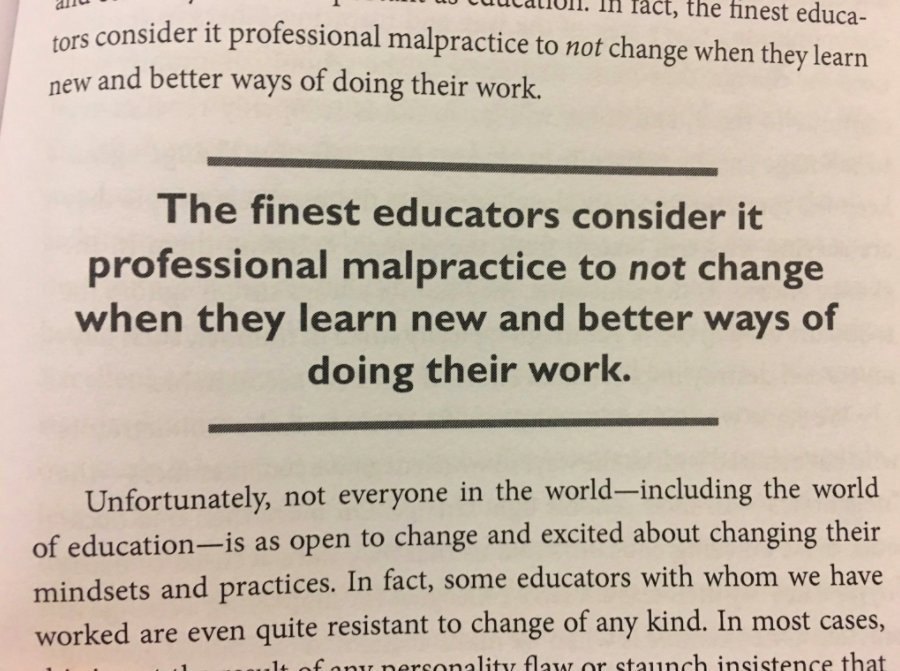 Mutual mistrust will doom an otherwise well-conceived change initiative to failure.
Mutual mistrust will doom an otherwise well-conceived change initiative to failure.
If you are trying to implement your change effort in an environment where most of the people working with you mistrust each other, you’ll have limited success. You’ll need to spend some time rebuilding trust if you want better results from your change effort.
Trust is a fragile asset that is easily harmed.
It's hard to get employees to support the changes that leadership wants to make when all that the employees see for themselves are negative consequences. Click To Tweet
(6) Organizational politicsSome resist change as a political strategy to “prove” that the decision is wrong. They may also resist to show that the person leading the change is not up to the task. Others may resist because they will lose some power in the organizational. In these instances, these individuals are committed to seeing the change effort fail.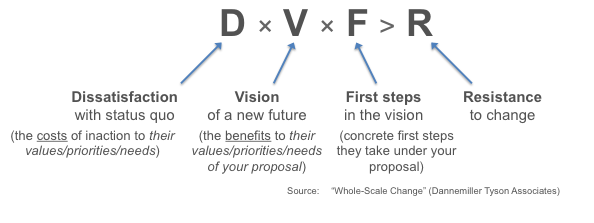
Sometimes when I work with managers they become frustrated with the political resistance that they encounter from others. Political obstacles are frustrating when you are trying to implement needed change. My advice to you is to acknowledge what you are feeling and then take positive steps to counter the organizational resistance you are facing.
Politics in organizations are a fact of life!
(7) Fear of failureSweeping changes on the job can cause your team members to doubt their capabilities to perform their duties. What is known is comfortable! Your team members may be resisting these changes because they are worried that they cannot adapt to new work requirements.
Fear is a powerful motivator that can harden people’s intent to resist your efforts to implement change. If you want your change effort to be successful, you’ll need to help your team members move beyond these fears.
(8) Faulty Implementation Approach (Lack of tact or poor timing)Sometimes it is not what a leader does, but it is how s/he does it that creates resistance to change! Undue resistance can occur because changes are introduced in an insensitive manner or at an awkward time.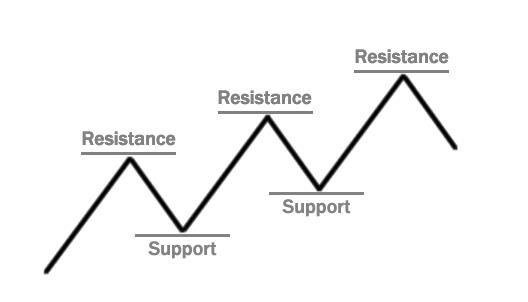
In other words, people may agree with the change that you want to implement but they may not agree with how you are going about making the change.
For any significant organizational change effort to be effective, you’ll need a thoughtful strategy and a thoughtful implementation approach to address these barriers.
So, the next time you hear someone say that people naturally resist change explain to them that this is a myth. We change all of the time.
People in an organization will always evaluate the benefit of any change. Will the change make their organizational lives better? Or, will the change make their lives worse? Click To Tweet
Back to Top
Case Study: Do People Naturally Resist Change?
OK, you’re making me work hard here! Consider the following story that I share in my leadership training:
After the end of a tough week in the office, you arrive home and eat a quick meal and collapse on your bed. Early the next morning, you check your mailbox and find that you have a registered letter at the postal office.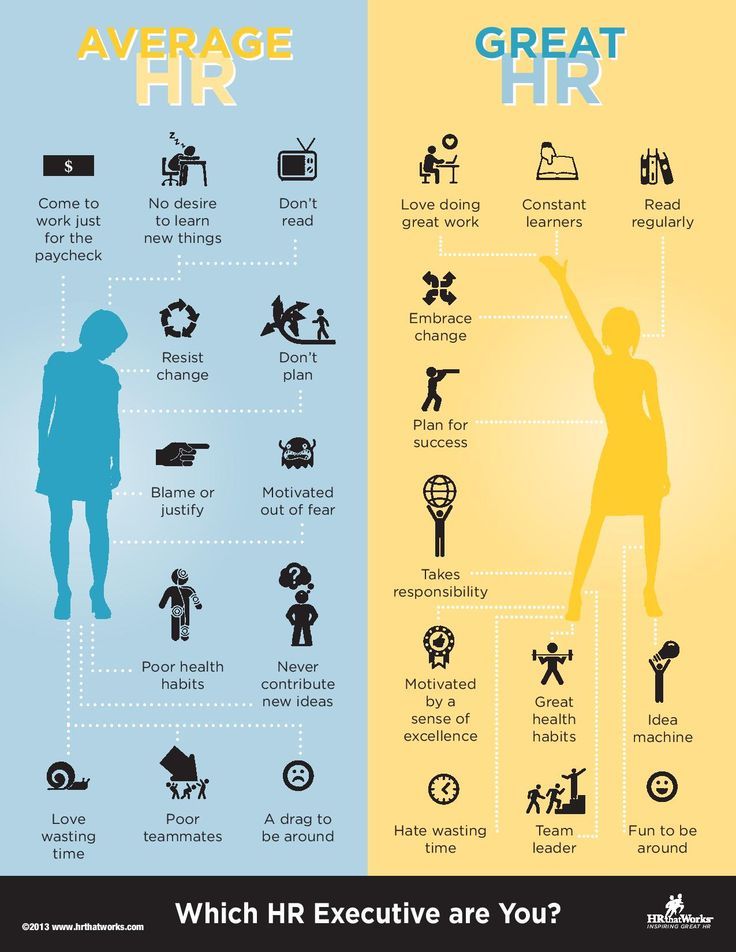 You get annoyed and reluctantly get dressed to go pick up this “special letter” on what is supposed to be your day off.
You get annoyed and reluctantly get dressed to go pick up this “special letter” on what is supposed to be your day off.
On the way there, you say to yourself that this better not be another trick sales offer from that vendor trying to sell you something for your house. You arrive at the postal office and you stand in line for what seems like forever. You finally get to the representative who has your mail and you grumble that you are there to pick up a registered letter.
He gets your letter, gives it to you, and when you look at it you can’t believe what you have received. You say to yourself that this can’t be what you think it is.
You start visibly shaking as you quickly open the letter.
As you read the letter, your whole attitude changes. You go from being grumpy to being excited.
By the time you get to the end of the letter you are jumping up and down and yelling with delight.
You just won a national sweepstakes contest and the award is one million dollars.
Now I have just one question for you:
Are you going to resist this change?
People do not resist change that they believe is in their best interests. Click To Tweet
Back to Top
Video: Why People Resist Change
Music for this video is courtesy of www.musicrevolution.com.
Back to Top
Survey: Resistance to Change
Back to Top
Member Content
- Article: Understanding the Bad, the Good, and Your Role in Change and Innovation
- Video: Improving Your Ability to Lead Change
- Self-Assessment: How Effective Are You as a Change Agent?
- Lesson: How to Communicate the Need for Change
- Lesson: How to Reduce Employee Resistance to Change
- Gold and Silver Tier Bonus: Infographic Cheatsheet Questionnaire — Is Your Organization Ready for Change?
- Gold Tier Bonus: Special Report — 5 Strategies to Build Support for Organizational Change
Back to Top
Scholarly Citations for this Article
This article from Management is a Journey has been cited in the following scholarly research articles:
- Mediterranean Journal of Social Sciences: The Reality of Resistance to Change Behaviour at the Department of Correctional Services of South Africa | University of Johannesburg ( Mbongeni Mdletye, Jos Coetzee, and Wilfred Ukpere)
- Dissertation: Understanding the Relationship between Global Food Safety Initiative (GFSI) and High Performance Work Systems (HPWS) and the Role of Employee Learning and Development | The George Washington University (Charles K.
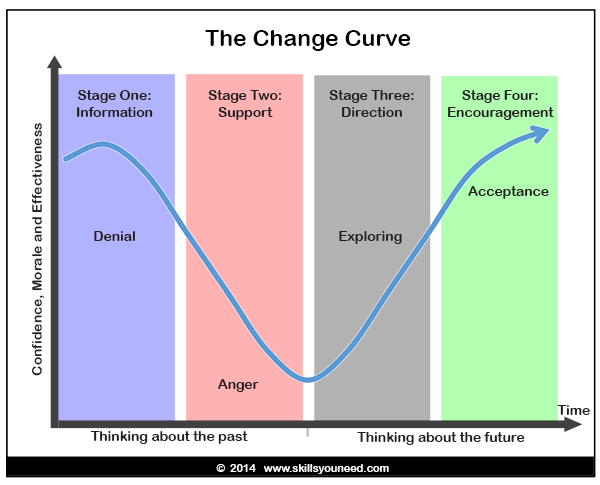 Torwudzo)
Torwudzo) - Dissertation: Exploring the Elements and Dynamics of Transformational Change | University of Johannesburg (Mbongeni Mdletye)
Understanding Why People Resist Change
Why do people resist change? It's natural and human response to change but far more than an emotional issue. As change management practitioners, it is our job to understand the root causes of resistance within teams, so we can help people move through their individual transitions and successfully adopt important changes.
Resistance to Change by Group
In Prosci's Best Practices in Change Management research, participants identified the groups from which they experienced the most resistance. Mid-level managers were the most resistant group, followed by front-line employees. These findings are consistent with previous studies.
Mid-level managers were the most resistant group, followed by front-line employees. These findings are consistent with previous studies.
Free Resistance Checklist: Best Practices for Managing Resistance to Change
Why Do Employees Resist Change?
Although employee resistance has many causes, Prosci research reveals five primary reasons:
- Lack of awareness about the reason for change
- Change in job role
- Fear of the unknown
- Lack of support from or trust in leaders
- Exclusion from change-related decisions
Lack of awareness
The top reason employees resist change is because they lack of awareness about the purpose and reason for the change. This arises from the organization's failure to communicate details and business reasons for the change, as well as a lack of clarity about employee roles in change success. Resistance occurs when employees can't answer, "What's in it for me?"
Awareness is one of the five building blocks of the Prosci ADKAR Model
Change in role
Resistance occurs when changes are required in an employee's role.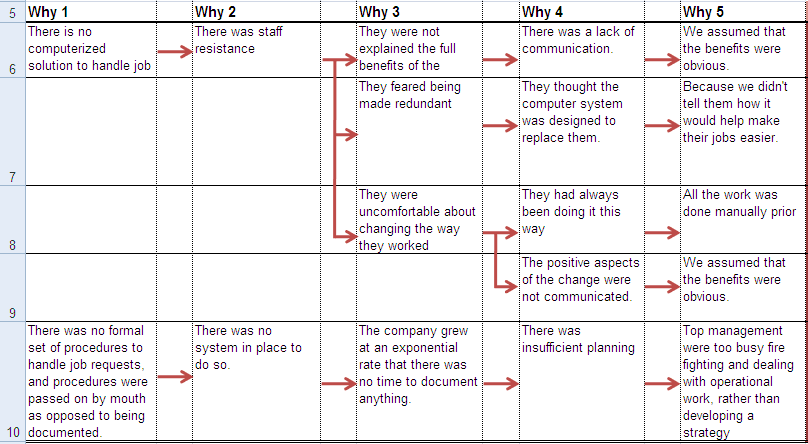 These can include workload increases, job description changes, or new behavioral requirements. When role changes are required, employees often lack desire to learn a new system or technology. Others are concerned about the time they have to adopt changes, a lack of incentives, and decreased autonomy and control. Resistance can also occur when an employee loses power, status or identity.
These can include workload increases, job description changes, or new behavioral requirements. When role changes are required, employees often lack desire to learn a new system or technology. Others are concerned about the time they have to adopt changes, a lack of incentives, and decreased autonomy and control. Resistance can also occur when an employee loses power, status or identity.
Fear of the unknown
Fear is a significant cause of resistance among employees, especially fears about job loss and lower compensation. Uncertainty about their own future and the future of the organization arise due to past experience with failed changes. Employees grow insecure about their ability to perform well with new technology, fear changes to organizational culture, and fear the possibility of increased evaluation and monitoring. Employees with longer tenures fear change more than newer employees because of the depth of their comfort with the old ways of doing things.
Lack of support from and trust in management or leadership
The nature of resistance to change is such that people managers and and leaders influence employee resistance. Often, managers display higher resistance and reduced support for change. This poor role modeling has a direct impact on employee behaviors and their support for the change. Previous negative experiences also increase resistance among employees who lack trust in executive leadership and fear a disconnect with or inadequate support through the transition process.
Often, managers display higher resistance and reduced support for change. This poor role modeling has a direct impact on employee behaviors and their support for the change. Previous negative experiences also increase resistance among employees who lack trust in executive leadership and fear a disconnect with or inadequate support through the transition process.
Exclusion from change-related decisions
Employees who are not included in the decision to change and the design of solutions often resist change. Commonly, front-line employees feel unheard as as well threatened, betrayed, blind-sided or targeted by the change. Employees want to be a part of the process of preparing, equipping and supporting people, as well as contributing to the change sequencing. Transparency and communication in the planning process is important to counteracting this resistance.
Why Do Managers Resist Change?
Prosci research participants identified five primary reasons managers resist change:
- Organizational culture issues
- Lack of awareness and knowledge about change
- Lack of support and commitment for change management
- Misalignment of project goals and personal incentives
- Lack of confidence in their ability to manage change
Organizational culture
Participants report that organizational culture is a primary cause of resistance. Specifics include risk-averse cultures, past negative experience with change, groupism versus organizational dedication, and issues such as mistrust across departments and reporting levels. In cultures devoid of sponsorship in which leaders and direct supervisors failed to support them, managers feel undermined.
Specifics include risk-averse cultures, past negative experience with change, groupism versus organizational dedication, and issues such as mistrust across departments and reporting levels. In cultures devoid of sponsorship in which leaders and direct supervisors failed to support them, managers feel undermined.
Lack of awareness and knowledge about change
Research shows that managers resist change due to a lack of knowledge about what a change entails, lack of information and understanding about the return on investment (ROI) and reasons for change, and lack of knowledge about "What’s in it for me?”
Lack of support and commitment
Resistant managers may believe the change is a bad solution or that it will fail. They may be comfortable with the status quo or believe the change is misaligned with company goals. Some dislike what the change entails or requires of them. Others fear losing control, power or status, or they don't want increased visibility or accountability.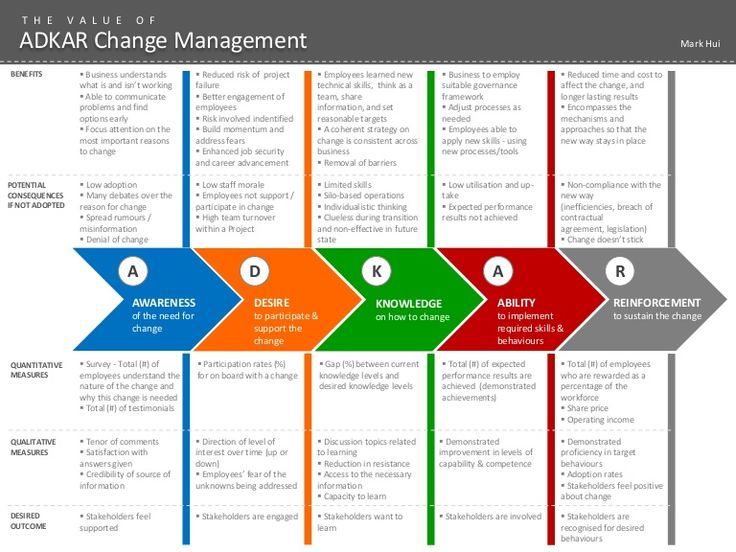
Misalignment of project goals and personal incentives
Research reveals that issues on the project management side of changes consistently cause manager resistance. This includes the pace of the change, lack of metrics, metrics that don't align with parameters for promotion, or misalignment with pay, bonus scales, and incentives. Participants acknowledge that these deterrents or a lack of incentives make change unappealing to managers.
Lack of confidence in their ability to manage the people side of change
Manager resistance is often due to their inability to be a leader of change and facilitate its adoption. Some managers resist because they lack the skills to effectively manage resistance in their teams and communicate difficult messages to direct reports.
How People Resist Change
How will you know resistance when you see it in your organization's people? Participants in Prosci's Managing Resistance to Change research study shared numerous examples, including:
- Lack of participation in the change – such as trying to outlast the change until it goes away, or attempts to be exempted from the change
- Openly expressing negative emotions – complaining, criticism, nitpicking, hostility, aggression, anger, frustration, excuses, low morale, bad attitudes, critical comments and openly expressing that the change won't work
- Absenteeism – not attending status meetings and project events, skipping scheduled trainings, and missing work altogether
- Reverting to old ways – ignoring the new ways of working and finding workarounds
- Decreased productivity – missing deadlines, experiencing delays, and suffering a noticeable reduction in work outputs
Learn Resistance Management
Resistance is a top obstacle to successful change in every Prosci research study. Underestimating or ignoring resistance is a common mistake that can make resistance worse. Similarly, not listening to and understanding the concerns of those impacted by change can lead to an ineffective one-size-fits-all approach that minimizes individual root causes and can lead to a lack of sufficient planning. When it comes to managing organizational change, change practitioners should start by following five key tips from the research: do change management right the first time, expect resistance to change, follow a formal approach, identify the root causes of resistance, and engage the “right” resistance managers.
Underestimating or ignoring resistance is a common mistake that can make resistance worse. Similarly, not listening to and understanding the concerns of those impacted by change can lead to an ineffective one-size-fits-all approach that minimizes individual root causes and can lead to a lack of sufficient planning. When it comes to managing organizational change, change practitioners should start by following five key tips from the research: do change management right the first time, expect resistance to change, follow a formal approach, identify the root causes of resistance, and engage the “right” resistance managers.
Resistance to change - Platrum Blog
Contents
- 1. Violation of agreements by the manager
- 2. Misunderstanding why changes are needed
- 3. Lack of desire to be in the team
behave to the owner and managers so that the introduction of new tools takes place with the support of the team.
By introducing new standards in the company, such as management tools, CRM system, salary changes, new work schedule, education and training, managers think that the need for change is clear to subordinates. Therefore, they are surprised when employees resist change.
Therefore, they are surprised when employees resist change.
Resistance to change can manifest itself in conflicts, boycotts, silent discontent. For example, non-compliance with the dress code, new rules of behavior in the office, ignoring the automated accounting system. Employees follow the new rules formally, as they see no point in the ongoing reforms. As a result, the efficiency of the company decreases.
There are three reasons why employees resist change and do not support organizational reform.
1. Violation of agreements by the manager
Employees speak out against the new rules, but the reason for their disagreement lies in violations of agreements. An employee who has been working for the company for several years has disagreements, but in general he likes the place and continues to work. But suddenly the manager introduces a new order, and the employee explodes. The leader believes that the new order is to blame for the resistance. But in fact, this is due to the accumulated disagreement of subordinates.
Solution: before making changes, talk to the key people in the business: the best salespeople, developers, oldies who are respected by employees. Ask how they are doing, what they like or dislike, if there are agreements and promises that the company does not fulfill to them.
For example, an employee was promised that under certain conditions he would become a manager. He fulfilled the conditions, but the company hired an outside manager, and the employee was not even talked about the situation. Or when applying for a job, he was promised 17,000 and a further increase in salary. But there is no growth.
Another example: employees had certain responsibilities, but previously they were not required to plan and report on it. Now subordinates think they are being forced to do more work for the same money and resist it. From their point of view, this is a violation of the agreement on the functions that he performs and salary.
Solution: create a new agreement, show how innovations will affect work, career development and wages.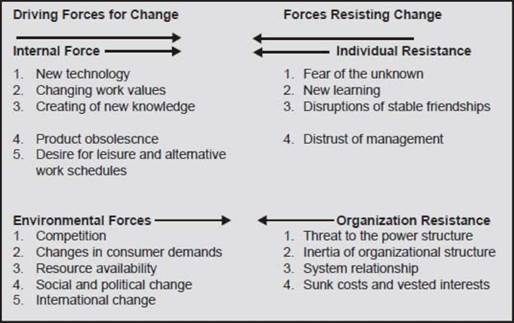
Any inconsistencies should be corrected. At a minimum, acknowledge the mistake and compensate for it with apologies, privileges, or bonuses. After the restoration of the broken exchange, disagreements go away, the employee gains confidence and is ready to follow the leader, accepting the changes. For employees, the manager is a model, a person whom they tend to trust, so it is important to keep these promises.
2. Lack of understanding why changes are needed
When a manager makes changes, employees do not understand why they need to plan their work, report and keep statistics, because everything worked before. Also, changes cause fear, misunderstanding of what will happen next. As a result, employees become resistant to change.
Solution: Misunderstanding can be dealt with by informing the team about how the new system, metrics, coordination and planning will work. Everyone in the team should have an understanding of why changes are needed, how they affect careers and wages.
Tell us about the mission of the business, about the goal that the company and the whole team are moving towards, about how the changes will affect the company as a whole.
3. Lack of desire to be in a team
Most employees, when they get a job, do not choose the team they want to work in, but a place where they can do what they want and where they will pay decently. A rare employee chooses a place of work based on the goals of the company and evaluating the team in which they will work.
Teamwork involves rules and following common interests. Therefore, when a person is in the workplace only for his own benefit, he will not want to sacrifice his own comfort for the sake of the team and the goals of the company.
Solution: Team spirit is not formed in one day. Therefore, one of the main tasks of the company owner is the formation of the company's mission and its promotion among employees.
Tell your employees about your business goals and how you are going to achieve them. How the new order and rules contribute to this goal. How the success of the entire company will bring success to every employee. This way you will involve the team in achieving results.
How the new order and rules contribute to this goal. How the success of the entire company will bring success to every employee. This way you will involve the team in achieving results.
Any changes create some restrictions. Employees need to understand why the company is introducing new rules. Ensure information transparency. Address employees at a general meeting. Explain the goals and objectives of innovations, the positive aspects of change, tell us about the planned activities. Explain to the staff the benefits and rules of working in the new system, organize training. Make sure employees understand how the new order will affect the future of the company and each of them. Enlist support and then resistance to change in the company will be much less.
Why people resist change and how to help them rebuild / Sudo Null IT News
June 8-9 TechLead Conf. This is an online conference about engineering practices and processes. We will discuss in detail how to develop without bugs, how to work with legacy, how to ensure that MVP does not turn into technical debt, how to choose practices depending on the issue.
But we know that the best undertakings are shattered by the force of habit. You don't have to be a developer at a tech company to experience this. Remember how annoying changes in the interface of your favorite applications, even if they turn out to be convenient features later.
Coming up with a process that will improve the quality of a product is one thing, but implementing it so that it really brings value is quite another. It is not enough to say: “Guys, I know how! Do this, do this, do this." To get an idea of what pitfalls a tech lead can expect along the way to implementing the changes, we talked to Dmitry Maslennikov from Tinkoff. And already at the conference, Dmitry will tell you what needs to be done so that the changes take root in the team.
- What is the problem with the implementation of changes, why is it not enough to say how to do it?
We constantly have to implement something. Whoever you are, from an active team member to a tech lead or manager, you always have to influence your colleagues to do something differently, and often also in sync. Most often this is done on a whim, because engineers mainly study technology, programming language, algorithms, mathematics, but very rarely learn how to work with people.
Most often this is done on a whim, because engineers mainly study technology, programming language, algorithms, mathematics, but very rarely learn how to work with people.
And in general this sphere is incomprehensible. There are no exact answers here: all people are different, everyone has a different background and cultural characteristics. So it often doesn't work out very well.
From my own experience, I want to tell you how to effectively implement changes. I have a lot of practice, and now I generally do just that: I force teams to do something differently.
— Are we talking not only about processes, but also about tools?
Yes, I'm including tool injection here. For example, a long time ago I implemented Git. Now it is mainstream, and it seems that there is nothing to implement here. And once there was SVN, and implementing Git was another task.
Tool is a broad concept for me. In my understanding, pair programming or code review are also tools. I also include practices here, because, it seems to me, they are about the same thing. A tool is the practice of using that tool.
I also include practices here, because, it seems to me, they are about the same thing. A tool is the practice of using that tool.
- It turns out that the implementation of a daily meetings process is not much different from the implementation of the development environment?
Correct. For example, I've promoted environments on Google because they're easier to code with. But when a developer is more comfortable using vim and emacs, try convincing him to change his environment.
Why do people hate change so much? And even in cases where, it would seem, the best practices are designed to save time and effort.
There is always resistance - this is the basic principle.
There are changes that are easy: on the knurled track. But sometimes the changes will just be to stop the changes that are coming along. But to jump from one track to another, to change direction, is very difficult.
And this is true in everything. If a person is used to running, then he runs, and try to stop him. And the other is used to not running, so try to make him. Both of these are changes. Given that someone who runs regularly will probably be able to do some other sports without any problems, and this will be an easy change for him. And for someone who hasn't run, an easy change might be to start playing a new video game, for example. But it will be very difficult to get a runner to play this game.
I understand change as a task to jump from one path to another.
Of course, changes in the knurled way, when people just need to be pushed, are much easier than changes that significantly change the usual way of life. But sometimes it is the second ones that are needed, and it will not be possible to introduce them gradually.
How people in a company react to innovation is also influenced by company culture. For example, in the West, it is quite often in the company's culture that all opinions are important and everyone should be listened to. It helps a lot with change. And in Russia it often happens that when you propose to do something in a new way, a ton of criticism immediately falls on you. If a person does not know how to withstand criticism, then he simply becomes silent, and no changes occur. In the West, changes are usually easier, because at least proposals are listened to.
For example, in the West, it is quite often in the company's culture that all opinions are important and everyone should be listened to. It helps a lot with change. And in Russia it often happens that when you propose to do something in a new way, a ton of criticism immediately falls on you. If a person does not know how to withstand criticism, then he simply becomes silent, and no changes occur. In the West, changes are usually easier, because at least proposals are listened to.
- Is it always possible to build an iterative process of implementing changes? And won't the movement in small steps only get in the way, because it will be easier to slide back to the old order?
Sometimes it is very difficult to take a big step at once and you have to break the implementation process into small stages. For example, now we want all teams to calculate the SLA themselves and automatically. I did kick-off training for them, but only the top three out of eight teams made SLA calculations for themselves. It became clear that we needed to help the teams and first develop tools, give a methodology.
It became clear that we needed to help the teams and first develop tools, give a methodology.
This again depends a lot on the teams that are learning new things. You can again bring the sports analogy. If an athlete swimmer starts running, his progress and steps in terms of distances and loads will obviously be greater than that of a person who has not been involved in sports before. It makes no sense to classify both of them in the same category of "beginner runners" - they have different training.
So in development. If this is a cool team with highly professional engineers who also have well-developed soft skills, they most likely understand the need for changes, and the implementation of something will be faster and easier.
When making changes, you need to understand who you work with, what kind of team, how ready it is, what they already know how to do.
— Who should initiate changes and who should implement and maintain? Does it have to be the same person?
I believe that everyone who cares, regardless of position, should initiate change.
I encourage innovation as much as possible. Western companies do it under a new sauce, but our culture also has historical roots - rationalization proposals. Any employee could make a rationalization proposal, and if it was beneficial, then the employee was encouraged.
If a person is sure that it will be better this way, he should try to achieve change. Not the fact that it will really be better - everyone is wrong. But if you have the desire and energy to do it, then you need to try. And with my report, I want to suggest what you need to think about before you start.
— Is it necessary to have special powers and use administrative resources to implement something?
The administrative resource is just one of the tools that can also be used occasionally. If it is used too often, it will lose strength, there will be a lot of dissatisfaction. But sometimes you can't do without it.
It is rather important to note here that in any case, the implementation of changes needs control.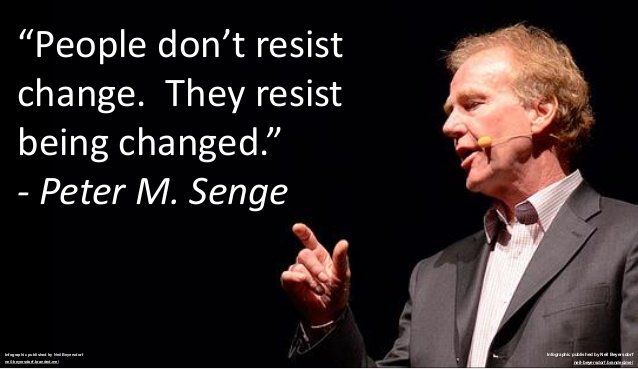
If you implement something only in your team, then it is easy to control - you immediately see how everything is going. And when the changes are larger, control becomes costly, but you can’t do without it. At least because they will misunderstand, they will not use it as intended, and without control it will not even become clear.
I often see the law "If something can go wrong, it will go wrong" in action. On the contrary, glimpses of when everything went like this are so rare and are perceived as a miracle. And normally you need to prepare to control.
Monitor not in the sense of administrative endless reports (although sometimes it is). It is necessary to check whether everyone understood this way, whether everything is being done this way and whether it is being done at all. If you do not invest in it, then everything will definitely go wrong.
- How to track that, for example, colleagues seem to show the fixation of something in a special form, but for themselves, as they wrote in Google docs, they write? That is, the proposed tool is used only to report, but not to make it more convenient for ourselves.
Google docs win with convenience, and I enjoy using them myself. But, if necessary, with little tricks you can beat this convenience.
An excellent example of such a trick, which quietly allows you to change people's habits, can be peeped at Google. When the company wanted their employees to consume less harmful sweets, they replaced refrigerators with those in which the lower part of the door is opaque and the upper one is transparent. Juices, plain water and fruit were placed upstairs, and all chocolates and sodas were moved downstairs so that you also had to bend down for them. Of course, it worked, and people themselves changed their behavior.
You can also use these tricks with working tools. Google docs are essentially the same refrigerator that you don’t have to bend down into: it’s very easy to fumble, it’s convenient to edit, etc. This convenience works against the introduction of some novelties. But the same tricks can be applied.
For example, now many people have started working remotely. We also have almost all employees working remotely, and the question arose of how best to keep track of them: to understand whether they are busy, whether they are busy. In the office, this was not necessary, but here it was needed. We considered different options, and among other things I suggested writing daily reports.
We also have almost all employees working remotely, and the question arose of how best to keep track of them: to understand whether they are busy, whether they are busy. In the office, this was not necessary, but here it was needed. We considered different options, and among other things I suggested writing daily reports.
I proposed a specific report format, wrote a small tool that would then beautifully display this format - I tried to make it convenient to use. I have introduced this practice in teams that are under my control. I read all the reports at least once a week, gave everyone feedback, what was right, what was wrong. And in two weeks, the process went into a rut: everyone writes everything, no complaints.
Then I proposed the same scheme to my superior, and he passed it on to other teams, but did not control it. As a result, everyone reinvented their formats, no one began to observe a single format, at least within the team. Due to the fact that there were no tools to control the format, all the more so no one followed any format. As a result, it did not work for anyone, only my employees continue to write reports, and without negative ones.
As a result, it did not work for anyone, only my employees continue to write reports, and without negative ones.
It's all about control - it was not in other teams, so nothing happened. Moreover, control is not about punishing non-compliance, but about the fact that I cared, I gave feedback. Therefore, in my team, some even liked this practice, while the rest did not experience any inconvenience and said that it was in any way more convenient than they would have forced them to write worklogs in Jira.
Another one of my favorite examples: how we implemented postmortems. In Google, postmortems are written in Google docs. They don’t need anything else, because a postmortem is essentially a document that you need to make it easy to read and rummage, easy to assemble into a directory with links. We introduced writing postmortems on the wiki - in principle, this is about the same thing. But everyone was ready to offer something, to tell what was inconvenient, and to say what needed to be improved. But no one has improved.
But no one has improved.
In this case, as a result, we had to use the administrative resource and push through the dissenters. The administrative resource was that in the event of any major failure, the technical director was ready to explain to everyone why postmortems are important in principle, why in this format, using these tools. It was a serious matter and we took a hard line.
In some cases, a rigid position is indispensable.
Otherwise, there will be a farce, details will be discussed until everyone gets tired of doing this at all and everything returns to its usual track.
- It seems that if the changes are significant and greatly change the usual order, then they require efforts from all participants in the process. Should I be patient or is there another way?
You almost always have to be patient. It seems to me that, therefore, my report will also be useful to those who have become “victims” of the changes. So that they think that everything is not just like that and that spokes in the wheels are not good. I myself used to be like that, but now, when they tell me that something needs to be done differently, I first try to understand why it might be necessary. And how to help or at least not interfere.
So that they think that everything is not just like that and that spokes in the wheels are not good. I myself used to be like that, but now, when they tell me that something needs to be done differently, I first try to understand why it might be necessary. And how to help or at least not interfere.
— Is it possible that you endure, endure, when will it finally become more comfortable or better, but still it doesn’t get any better? When is it not right to stop and decide that the idea didn't work?
Of course, some changes have to be abandoned. For example, Elon Musk tried for a long time to make a robotic factory so that Tesla would be assembled mainly by robots. This continued until all deadlines were violated. In the end, Musk admitted that he was in a hurry, that the technology was not yet ready, and made a little more traditional manufacturing.
The specific criteria at which point you need to abandon the changes are different in each case.
In my opinion, cases are interesting when it is known for sure that it works well for others. I believe that when such data is available, it means that it will definitely work for you. Cultural differences are often cited as an argument against, but I do not like such reasoning.
It seems to me that if a person does not like something for religious reasons (in the sense of a fanatical belief in the correctness of certain approaches), then he shows hidden resistance. Then everything will be done so that the idea dies. But if you are implementing a really useful practice, then time will run out.
For example, I've recently seen how just a little time can help you change your mind. One young employee, foaming at the mouth, argued that it was convenient for him and his teammates to receive a huge pile of alerts in slack. Allegedly, looking at the board with 1000 events per day allows you to quickly understand what is happening with the system. And we tried to convince him that alerts should work differently: they should be rare and really important. And for ordinary events there should be a separate board that you can see when you need to read something like logs. We argued for a long time and came to such a compromise: we help make the board, and he tries to use it for a week. After 2-3 weeks, the one who resisted the most was already convincing his lead with my own arguments. It took just a little time to realize that the offer is really useful.
And for ordinary events there should be a separate board that you can see when you need to read something like logs. We argued for a long time and came to such a compromise: we help make the board, and he tries to use it for a week. After 2-3 weeks, the one who resisted the most was already convincing his lead with my own arguments. It took just a little time to realize that the offer is really useful.
Of course, political issues may come into play here: how long to experiment, how much pressure can be exerted, what maximum negative we are ready to go for, if any. These are gray areas.
I'm not talking about such complex cases. I want to tell you what to think about when implementing changes for those who have just become a lead. My report will be a good help for those who just yesterday communicated well with colleagues, and now his ideas are not very accepted. There will still be difficulties, but they will be easier to deal with if you think about problem points in advance.










